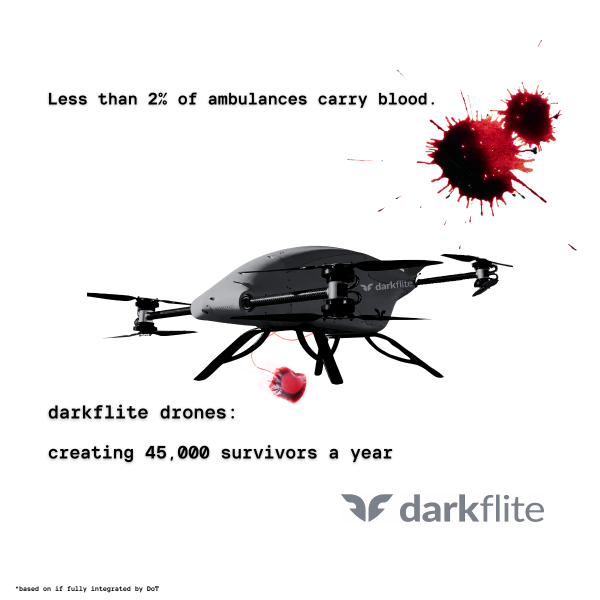
Every year, about 45,000 lives are lost on U.S. roads —many from injuries that could be survivable with faster access to critical care. We believe drone technology can change that.
Through our work with NHTSA under the U.S. Department of Transportation’s SBIR program (link to project), we’ve shown that strategically deployed drones have the potential to transform emergency medical response—especially in high-accident-density areas and remote regions.
Today, less than 2% in the U.S. of ambulances carry blood. That’s because blood is a tightly regulated, time-sensitive resource requiring careful storage, crossmatching, and replenishment. Most EMS systems simply aren’t equipped to handle it at scale—especially in rural or dispersed areas.
That’s where drones come in: With on-demand delivery of fresh whole blood directly to crash scenes, drones can help stabilize patients before they reach the hospital, prevent organ failure, improve recovery outcomes, and reduce the cost and strain on emergency care systems.
By shortening the time between injury and treatment, this approach could potentially help save thousands of lives each year. Even a modest reduction in fatalities translates to an economic impact in the billions, based on the Department of Transportation’s statistical value of life.
As we look ahead, we remain committed to advancing this work. Drone-based logistics isn’t just about innovation—it’s about readiness, equity, and resilience in America’s emergency response infrastructure.
We’re proud of the progress we’ve made—and excited for what comes next.
Lives depend on speed.
Our drones deliver it.
